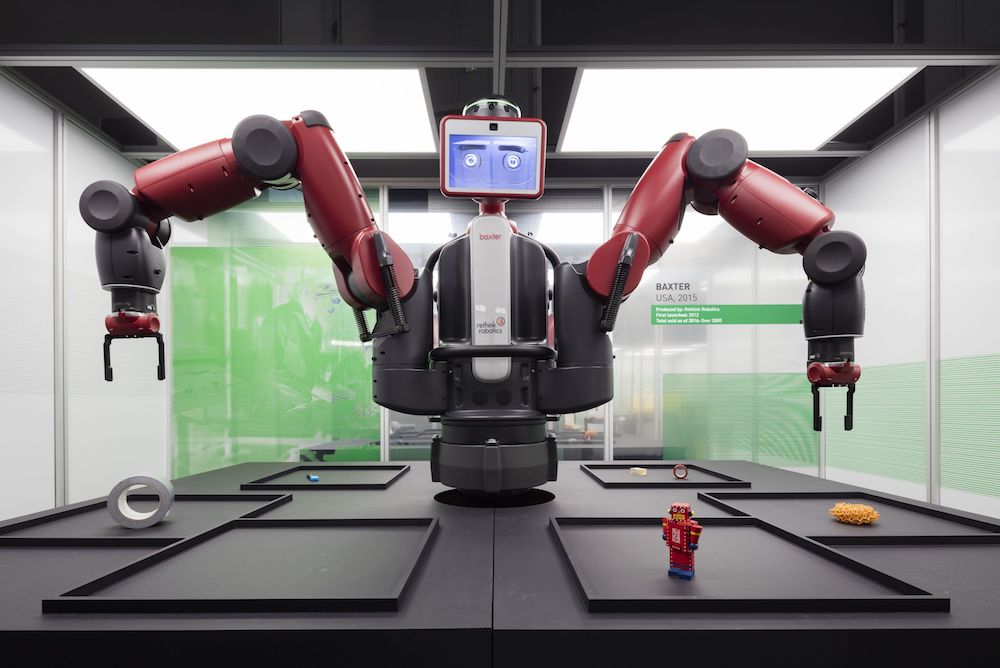
The Key to Winning Future Business: Cobot Palletizers, ROI Unveiled, To Buy or Not to Buy?
Evolution of Collaborative Robots
What Exactly is a Cobot Palletizer?

We will elaborate on the ROI later, but first let's elaborate on what a cobot palletizer is. Unlike traditional robots which need to be placed in separate, secure areas and usually require a lot more upkeep, cobots are designed to work alongside humans. Cobots help in boring and repetitive tasks like picking up, sorting, and packing products into pallets, which are sometimes better off being done by a machine owing to their physically and mentally strenuous nature.
In short, a cobot palletizer does the heavy lifting, quite literally, for placing products and pallets, allowing your employees to focus on other, more constructive tasks.
How Cobot Palletizers Drive ROI

1. Boosting Productivity and Efficiency
Productivity determines ROI, yes, at a baseline level productivity is everything. Unlike people, cobot palletizers don't take breaks which mean there is no downtime because of mistakes or fatigue. They are able to work for 24 hours, which suits industries with high-volume production.
For instance, Coca Cola adopted cobot palletizers on their production lines increased their palletizing speeds by 25% and reduced the errors that tired workers tend to make. By easing these labor constraints, their human workers were able to focus on more strategic challenges such as troubleshooting or fine-tuning the production process.
2. Cutting Labor Costs
I understand that the initial investment in cobots can feel quite excessive. mots do tend to replace workers and that is the inherent threat in adopting this technology. However, cobots counters save money because they reduce labor costs. After taking over physically demanding and repetitive work, employees are free to do more mental heavy lifting.
And Amazon is a perfect example. After the explosion of e-commerce, Amazon had to scale fast but labor shortages were a real concern.
3. Lowering Operational Costs
Cobot palletizing systems will reduce your operational expenditure. Mistakes such as stacks of pallets being misaligned or products getting damaged during the packing process are not easy to rectify. Cobot palletizers minimize such potential risks, alongside being specifically designed to consume very little energy.
Take Procter & Gamble (P&G) for example. P G Palletizing Incorporation cobots in some of the plants reducing energy consumption by 15%. This is not only beneficial for the company’s cost of power, but the greater accuracy of the robots has resulted in less damage to products, thereby reducing waste and cost for rework.
4. Flexibility and Scalability
Cobot palletizers are adaptable. This is beneficial for small companies who want to automate certain aspects of their production and large manufacturers who need to expand. Cobots can grow with your business. When there is a rise in demand, it's as simple as reprogramming them for new tasks, or changing the packaging design they use.
Siemens is another company that has adopted the use of the cobots. They have utilized these robots in their production lines so they can respond to changes in the market rapidly. In addition to aiding in palletizing, the cobots at Siemens have the ability to change between different products and packaging designs, adding a new level of flexibility to their operations.
5. Better Safety and Employee Satisfaction
First off, the less strain your employees undergo, the better it is for the company. Cobot palletizers perform best when there is a human counterpart willing to work with them which translates to less injuries from lifting, bending or any other repetitive actions. Most importantly, if the workplace is safe, then the employees get happier and more productive.
Let’s take a look at Ford. For instance, some of their plants implement cobots for the tedious job of palletizing. This has worked wonders in minimizing injuries and absenteeism stemming from overexertion. Plus, employees get to engage themselves in much more enjoyable and intellectually stimulating tasks, which increases their overall job satisfaction.
How Do You Calculate ROI for a Cobot Palletizer?

Here’s a quick breakdown of calculating ROI.
Initial Investment: This is the cost associated with buying and installing the remote palletizer, along with the system upgrade training and other systems modifications.
Indirect Benefits: Increased morale and motivation of employees lead to fewer accidents, and consequently less mistakes made on these products, which implies enhanced product quality.
Increased Revenue: The business can produce more at the same time without spending additional money on labor, which means you can accept more orders or produce more during the rush seasons.
Operational Savings: Money spent on personnel, fuel, and even upkeep has drastically reduced.
Here’s a simple formula for calculating ROI:

Track the hard savings (like labor reduction) and soft savings (like fewer accidents and better morale) to get a full picture of how investing in cobot palletizers impacts your bottom line.
Final Thoughts
When considering the purchase of a cobot palletizer, remember, it is an investment - not a cost. Cobot palletizers enable businesses to achieve higher productivity levels, cut down on labor costs and enhance overall workplace safety. All of these, when combined, increase the Return on Investment of the business, allowing the enterprise to experience economic gains.
Initially, paying for the robot might be hard to swallow, however, once an assessment is made, it is clear that the operational efficiency, and productivity improvements coupled with cost reduction will allow cobots to easily pay for themselves in the long run.
Are you ready to make the jump to a more automated workplace? With the impressive ROI cobot palletizers provide, there's no shortage of benefits when considering this update for your company.








